The described solution of the question How to simulate one step to a transfer function in python works as follows. You generate only two simulation steps for the inputs U (array-like) and T (also array-like). With both variables and your system you call the function scipy.signal.lsim (or scipy.signal.dsim for discrete systems) and you set also the initial values for the system states X. As result you get the output values and the new states Xn+1 which you store in the state variable for X.
In the next loop you take the last values of U and T and add the next input and time step. Now you call the lsim again but this time with the states X of the last iteration and so on.
Here some sample code of a Two-Mass-System:
(sorry, it's not beautiful but it works.)
import math
import numpy as np
import scipy.signal as signal
import matplotlib.pyplot as plt
class TwoMassSystem:
def __init__(self):
# Source: Feiler2003
JM = 0.166 # kgm^2 moment of inertia (drive-mass)
JL = 0.333 # kgm^2 moment of inertia (load-mass)
d = 0.025 # Nms/rad damping coefficient (elastic shaft)
c = 410.0 # NM/rad stiffness (elastic shaft)
self.A = np.array([[-d/JM, -c/JM, d/JM],
[ 1.0, 0.0, -1.0],
[ d/JL, c/JL, -d/JL]] )
self.B = np.array([[ 1/JM, 0.0, 0.0],
[ 0.0, 0.0, 0.0],
[ 0.0, 0.0,-1/JL]] )
self.C = np.array([ 0.0, 0.0, 1.0 ])
self.D = np.array([ 0.0, 0.0, 0.0 ] )
self.X = np.array([ 0.0, 0.0, 0.0 ] )
self.T = np.array([ 0.0])
self.U = np.array([[0.0, 0.0, 0.0]])
self.sys1 = signal.StateSpace(self.A, self.B, self.C, self.D)
def resetStates(self):
self.X = np.array([ 0.0, 0.0, 0.0 ] )
self.T = np.array([ 0.0])
self.U = np.array([[0.0, 0.0, 0.0]])
def test_sim(self):
self.resetStates()
h = 0.1
ts = np.arange(0,10,h)
u = []
t = []
for i in ts:
uM = 1.0
if i > 1:
uL = 1.0
else:
uL = 0.0
u.append([ uM,
0.0,
uL])
t.append(i)
tout, y, x = signal.lsim(self.sys1, u, t, self.X)
return t, y
def test_step(self, uM, uL, tn):
"""
test_step(uM, uL, tn)
The call of the object instance simulates the two mass system with
the given input values for a discrete time step.
Parameters
----------
uM : float
input drive torque
uL : float
input load torque
tn : float
time step
Returns
-------
nM : float
angular velocity of the drive
nL : float
angular velocity of the load
"""
u_new = [ uM,
0.0,
uL]
self.T = np.array([self.T[-1], tn])
self.U = np.array([self.U[-1], u_new])
tout, y, x = signal.lsim(self.sys1, self.U, self.T, self.X)
# x and y contains 2 simulation points the newer one is the correct one.
self.X = x[-1] # update state
return y[-1] #
if __name__ == "__main__":
a = TwoMassSystem()
tsim, ysim = a.test_sim()
h = 0.1
ts = np.arange(h,10,h)
ys = []
a.resetStates()
for i in ts:
uM = 1.0
if i > 1:
uL = 1.0
else:
uL = 0.0
ys.append(a.test_step(uM, uL, i))
plt.plot(tsim, ysim, ts, ys)
plt.show()
However:
However, as you can see in the plot the result isn't identical and here is the problem, because I'dont know why. Therefore, I created a new question: Why does the result of a simulated step differ from the complete simulation?

Sources:
@InProceedings{Feiler2003,
author = {Feiler, M. and Westermaier, C. and Schroder, D.},
booktitle = {Proceedings of 2003 IEEE Conference on Control Applications, 2003. CCA 2003.},
title = {Adaptive speed control of a two-mass system},
year = {2003},
pages = {1112-1117 vol.2},
volume = {2},
doi = {10.1109/CCA.2003.1223166}
}
